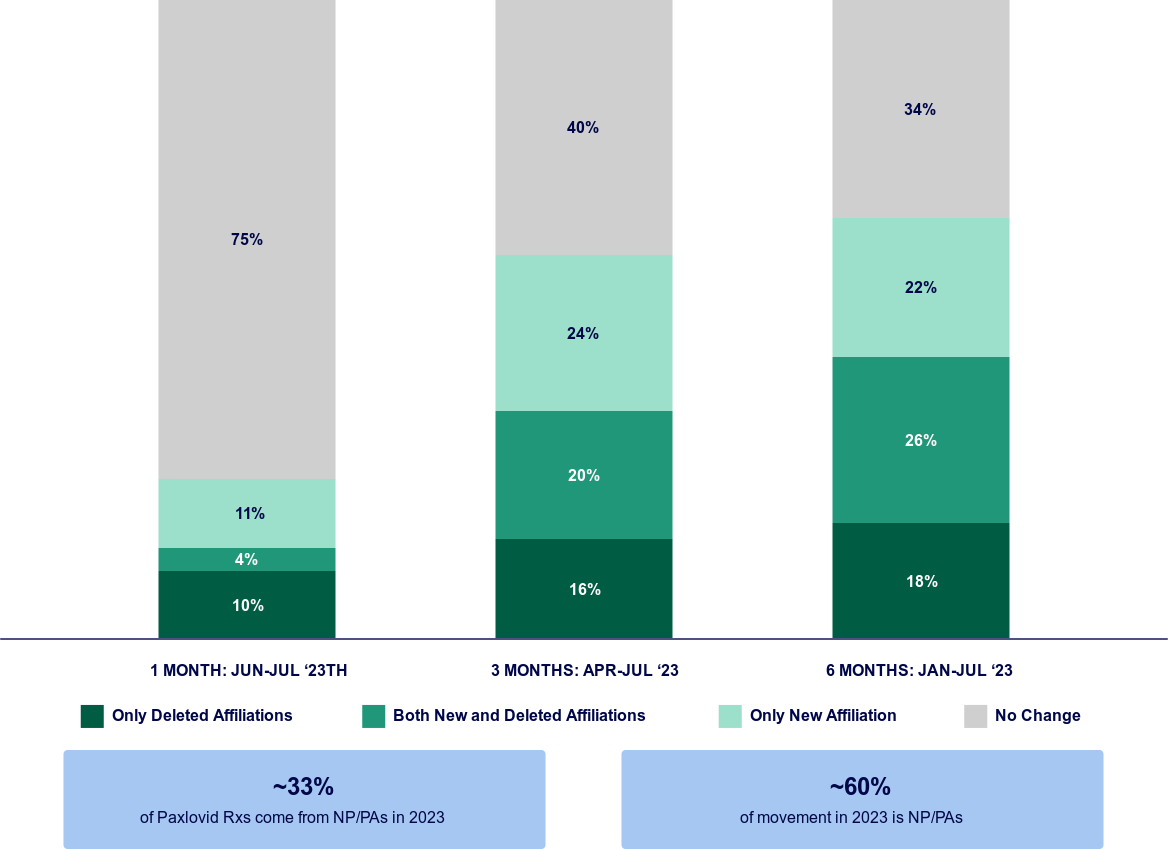How life sciences companies can use affiliations data to track non-traditional healthcare services.
Identifying the most actionable physicians and institutions for potential adoption and uptake of novel therapeutic products requires thoughtful and tailored marketing strategies. Traditionally, target lists of individuals are typically generated through a combination of patient-level claims and sales data. However, the growth of non-traditional healthcare settings (e.g., outside of the office or hospital setting) with limited capture in foundational data sources muddies the waters for identifying relevant stakeholders and presents challenges to optimizing targeting strategy.
During a recent Fierce Life Sciences webinar, experts from ClearView Healthcare Partners and Compile discussed several novel methods to address key challenges for targeting in non-traditional markets. Take a look at the below case studies, demonstrating the importance of affiliations data to overcome incomplete patient capture in atypical care settings.
- Comprehensive Capture of Health Care Provider (HCP) Targets for Psychedelic-Assisted Therapy
- Prioritizing Settings of Care in the COVID Market
- Maintaining Accurate Target Lists in Highly Fluctuating, Seasonal Markets
Case Study #1: Comprehensive Capture of Health Care Provider (HCP) Targets for Psychedelic-Assisted Therapy
Renewed interest in psychedelics as potential treatments for mental illnesses and disorders requires creative approaches for commercialization in today’s healthcare environment. Psychedelic-assisted therapies for PTSD require the co-localization of talk therapists and psychiatrists, posing a unique challenge in care delivery. Additionally, many of these HCPs have practices that are fully cash-pay and are not captured in traditional data sources (e.g., patient-level claims). Hence, identifying compelling HCP and institutional targets for commercialization is increasingly challenging
 .
.
Case Study #2: Prioritizing Settings of Care in the COVID Market
The landscape for COVID oral antiviral prescribing is diverse and evolving, occurring across a multitude of different settings. To design optimal targeting strategies in this market, it is important for manufacturers to understand which are the largest and most prominent settings for prescribing, and design targeting strategies around them. However, Rx claims data lacks insight into the setting in which therapies were prescribed, creating challenges in quantifying the distribution of oral antiviral prescribing across sites of care.
Utilizing novel methodologies to (1) link Rx claims to associated Mx claims, and (2) determine the settings from which the Mx claims were derived, manufacturers can better estimate the distribution of oral antiviral prescribing volumes across settings.

Additionally, results from these advanced data analyses can be triangulated with primary research-driven market sizing efforts to even further increase robustness and accuracy.
Case Study #3: Maintaining Accurate Target Lists in Highly Fluctuating, Seasonal Markets
Maximizing accuracy of target lists is critical, particularly in the limited window of seasonal primary care markets (e.g., flu, COVID, or allergies, etc.), when HCP receptivity and interest to engage is high. Nurse practitioners (NPs) and physician assistants (PAs), two key groups of prescribers in these markets, frequently move between practice settings during peak seasons, increasingly landing in non-traditional settings (e.g., telemedicine, etc.). In one analysis, we found that 60% of COVID-treating HCPs changed at least one affiliation in a three-month period.

Historically, collection of HCP affiliations data has relied on time-consuming, manual phone and email surveys which leads to dated and unreliable information. However, increasingly novel data sources are supporting longitudinal tracking and real-time updates of HCPs affiliations data, allowing for up-to-date information on HCP locations, allowing for capture of movement to non-traditional settings of care. Leveraging these novel data sources can allow manufacturers to optimize targeting strategies in real-time for rapidly evolving markets.
Conclusions:
Care delivery services outside the traditional office / hospital setting are fast growing businesses for providers. Traditional patient-level claims datasets lack the dimensionality to inform optimal targeting strategies in these markets. However, novel and powerful next-generation affiliations datasets have the ability to fill many of these gaps.
Interested in learning more? Click here to view the full webinar.
ABOUT THE SPEAKERS


